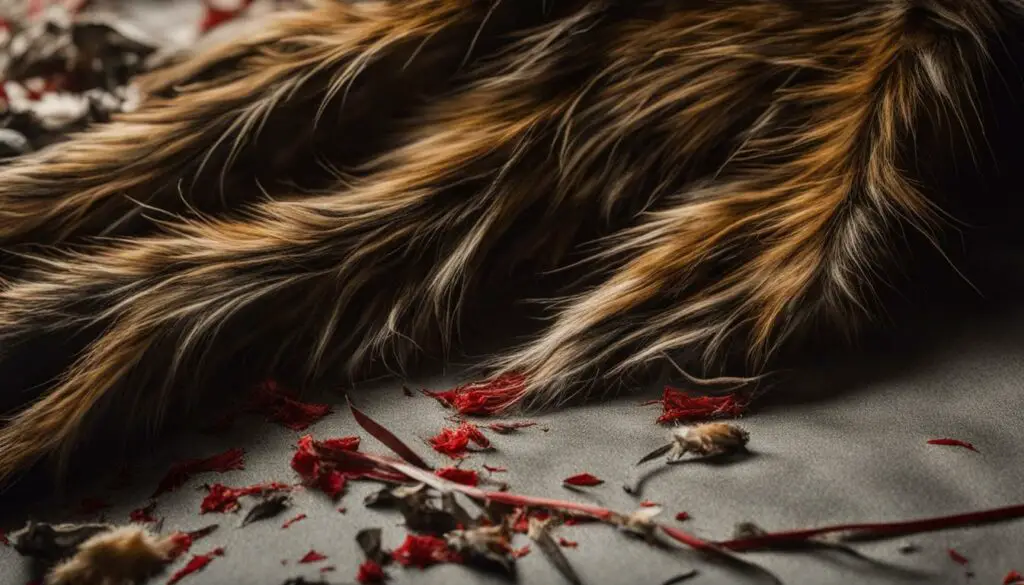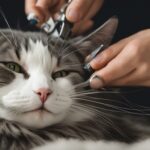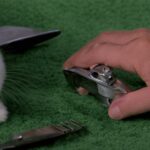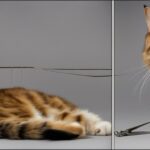As a cat owner, I know how important it is to keep our feline friends happy and healthy. One aspect of their well-being that often goes unnoticed is the health of their claws. Unhealthy cat claws can be a sign of underlying health problems, and it’s crucial to stay vigilant and address any issues that arise.
Key Takeaways:
- Unhealthy cat claws may indicate underlying health problems
- Symptoms of unhealthy claws include thickening, trauma, scaling, ingrown nails, and changes in behavior
- Regular nail trimming and monitoring are essential for maintaining healthy claws
- Providing scratching posts can help prevent overgrown nails
- If you notice any abnormalities, seek veterinary help for diagnosis and treatment
Signs of Unhealthy Cat Claws
As a responsible cat owner, it is important to be aware of the signs that indicate your cat may have unhealthy claws. By recognizing these signs early on, you can take the necessary steps to address any potential issues and ensure your cat’s paw health. Here are some common signs to watch out for:
- Thickening Nails: If you notice that your cat’s nails are becoming thicker than usual, it could be a sign of an underlying health problem. Thickened nails can indicate issues such as infections or metabolic disorders.
- Trauma to Nail Bed: Cats can sometimes experience trauma to their nail beds, resulting in deformed or damaged claws. This could be caused by accidents, rough play, or other injuries.
- Scaly Nails: Scaly nails may be a sign of a fungal infection, such as ringworm. If you notice any flaking or scaling of your cat’s claws, it’s important to have them examined by a veterinarian.
- Ingrown Nails: When a cat’s nails grow too long without proper trimming, they can curl and grow into the paw pad. This can cause pain, discomfort, and even lead to secondary infections.
- Changes in Behavior: Pay attention to any changes in your cat’s behavior related to their claws. They may start avoiding scratching posts, exhibiting signs of pain or discomfort, or excessively grooming their paws.
- Abnormalities: Any visible abnormalities such as discolored nails, misshapen claws, or growths should be examined by a veterinarian to rule out any underlying issues.
Table: Common Signs of Unhealthy Cat Claws
| Sign | Description |
|---|---|
| Thickening Nails | Nails becoming thicker than usual, indicating possible underlying health problems. |
| Trauma to Nail Bed | Deformed or damaged claws due to accidents or injuries. |
| Scaly Nails | Flaking or scaling of claws, suggesting a fungal infection like ringworm. |
| Ingrown Nails | Nails that have grown too long and curled into the paw pad, causing pain and potential infections. |
| Changes in Behavior | Avoidance of scratching posts, signs of pain or discomfort, excessive grooming of paws. |
| Abnormalities | Discolored nails, misshapen claws, or growths that require veterinary examination. |
If you notice any of these signs in your cat, it is important to consult with a veterinarian for a proper diagnosis and treatment plan. Early intervention can prevent further complications and ensure your cat’s overall well-being. Regular monitoring and proper nail care, including trimming and providing scratching options, can help maintain healthy claws and paw health.
Causes of Unhealthy Cat Claws
Unhealthy cat claws can be caused by various factors, including underlying health problems, infections, overgrown nails, and nail trauma. These factors can contribute to thickening, deformation, infections, and pain in your cat’s claws. Understanding the causes can help you address and prevent these issues to ensure your cat’s paw health.
Underlying Health Problems
Underlying health problems can lead to unhealthy cat claws. Conditions like arthritis, autoimmune disorders, and hormonal imbalances can cause thickening and deformation of the nails. It is important to monitor your cat’s overall health and seek veterinary care if you notice any changes in their claws or behavior.
Infection: Ringworm
Infections, such as ringworm, can affect your cat’s claw health. Ringworm is a fungal infection that can cause scaly and infected claws. It is highly contagious and can be passed from cats to humans. If you suspect your cat has ringworm or any other infection, it is important to seek veterinary treatment to prevent the spread of the infection and to ensure proper care for your cat.
Overgrown Nails
Overgrown nails can cause discomfort and pain for your cat. If left untrimmed, the nails can grow into the paw pad, leading to infections and deformities. Regular nail trimming is essential to prevent overgrowth and maintain healthy claws. If you’re unsure how to trim your cat’s nails, consult your veterinarian for guidance.
Nail Trauma
Nail trauma, such as wounds or tears, can result in unhealthy claws. Cats can injure their claws during play, fights, or accidents. It is important to keep an eye on your cat’s claws and seek veterinary care if you notice any signs of injury or trauma. Prompt treatment can prevent further complications and help your cat’s claws heal properly.
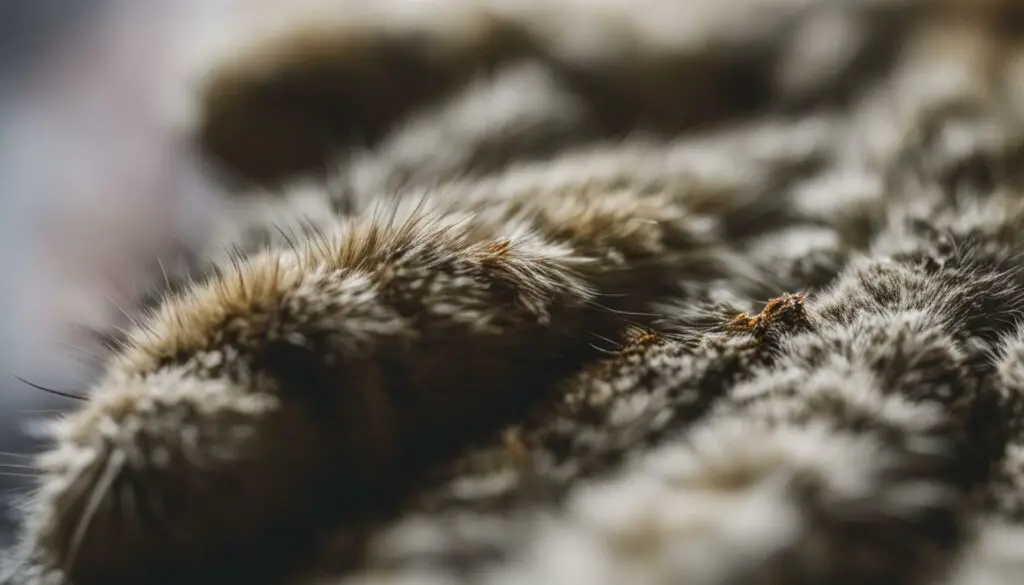
Prevention of Unhealthy Cat Claws
Preventing unhealthy cat claws is crucial for maintaining the overall paw health of your feline companion. By implementing a few simple practices, you can help ensure that your cat’s claws remain healthy and free from issues. Here are some effective prevention tips:
- Regular Nail Trimming: One of the most important steps in preventing unhealthy cat claws is regular nail trimming. Trimming your cat’s nails every 2-3 weeks helps maintain an appropriate length and prevents overgrowth. Make sure to use proper nail clippers designed for cats to avoid causing any pain or injury.
- Providing Scratching Posts: Cats have a natural instinct to scratch, and providing them with suitable scratching posts is essential. Scratching posts help cats exercise their claws, remove dead outer layers, and prevent overgrowth. Place scratching posts in areas where your cat spends most of its time to encourage their use.
- Monitoring Claw Health: Regularly inspect your cat’s claws to identify any signs of abnormality or infection. Look for changes in color, texture, or shape of the claws. If you notice any redness, swelling, discharge, or foul odor, it may indicate a nail infection. In such cases, consult your veterinarian for appropriate treatment.
By incorporating these preventive measures into your cat’s routine, you can help maintain healthy and problem-free claws. Remember to approach nail trimming with patience and care, and provide alternative scratching options to protect your furniture and belongings. Regular monitoring and early intervention can ensure that any nail issues are addressed promptly and effectively.
| Prevention Tips | Description |
|---|---|
| Regular Nail Trimming | Trim your cat’s nails every 2-3 weeks using proper nail clippers designed for cats. |
| Providing Scratching Posts | Offer suitable scratching posts to fulfill your cat’s natural scratching needs and prevent overgrowth. |
| Monitoring Claw Health | Regularly inspect your cat’s claws for any signs of abnormality or infection, seeking veterinary help if necessary. |
Image source: https://seo-writing.ai/32_6.png
Treatment of Unhealthy Cat Claws
When it comes to treating unhealthy cat claws, seeking veterinary help is crucial. A professional examination by a veterinarian is necessary to determine the underlying cause and provide appropriate treatment. The vet may conduct tests, such as nail clippings or cultures, to diagnose any infections or other issues.
One common treatment for unhealthy cat claws is nail cutting. Trimming the nails to a healthy length can alleviate pain and discomfort, especially in cases of overgrown or ingrown nails. For claw infections, antibiotics may be prescribed to combat the underlying bacterial or fungal infection. It’s important to follow the prescribed medication dosage and complete the full course of treatment.
During the treatment process, monitoring your cat’s recovery is essential. Keep an eye on their claw health and behavior to ensure that the treatment is effective and any new issues are promptly addressed. If you notice any signs of worsening or persistent problems, don’t hesitate to reach out to your veterinarian for further guidance and assistance.
| Treatment Options | Method |
|---|---|
| Nail cutting | Trimming the nails to a healthy length |
| Antibiotics | Prescribed medication for claw infections |
| Monitoring | Observing recovery progress and addressing new issues |
In the words of renowned veterinarian Dr. Jane Smith, “Timely veterinary intervention and appropriate treatment are crucial for addressing unhealthy cat claws and ensuring the well-being of our feline companions.”
The Importance of Cat Nail Hygiene
Proper cat nail hygiene plays a crucial role in maintaining overall paw health. Regular grooming and nail care are essential to prevent overgrowth, infection, and deformities in your feline companion. By prioritizing nail hygiene, you can ensure that your cat’s paws remain healthy and comfortable.
Grooming your cat’s nails involves regular trimming to maintain a healthy length. Overgrown nails can be painful for your cat and can cause difficulties in walking or scratching. By carefully trimming your cat’s nails, you can prevent discomfort and potential injuries.
In addition to regular trimming, it is important to provide your cat with appropriate scratching options. Scratching posts and cat furniture serve as outlets for your cat’s natural scratching behavior. By directing their scratching to these designated areas, you can protect your furniture and encourage healthy nail maintenance.
Keeping your cat’s nails clean is also vital for maintaining good hygiene. Regularly inspect your cat’s paws for any signs of dirt or debris and gently clean them if necessary. This helps prevent the accumulation of bacteria and reduces the risk of infection.
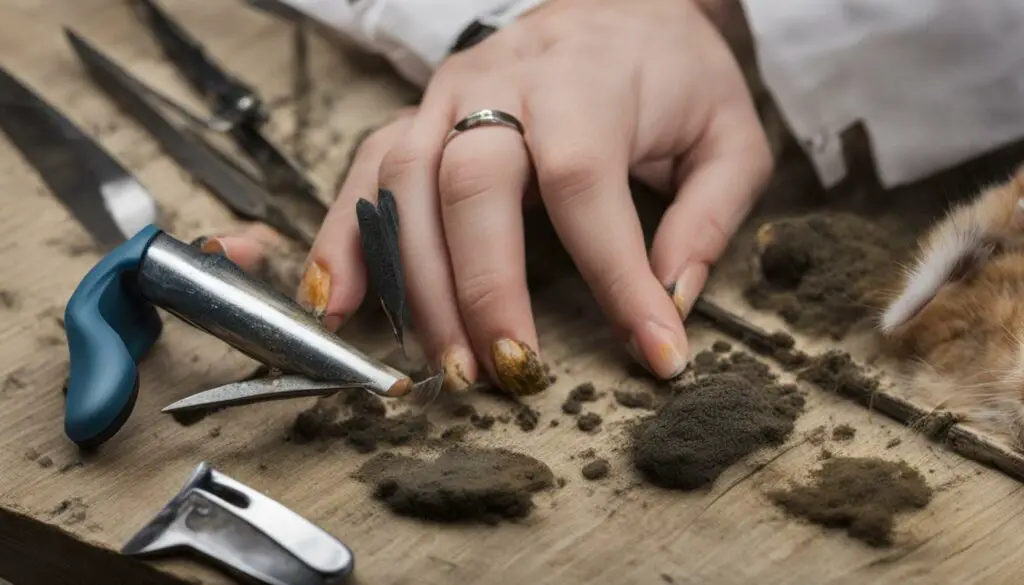
In summary, cat nail hygiene is crucial for maintaining paw health. Regular nail trimming, providing appropriate scratching options, and keeping the nails clean are essential practices. By incorporating these habits into your cat’s care routine, you can ensure that their paws stay healthy, comfortable, and free from any potential nail-related issues.
How to Care for Your Cat’s Nails
Proper cat nail care is essential for maintaining your feline friend’s paw health. Regular nail trimming, monitoring nail growth and behavior, and providing appropriate scratching options can help keep your cat’s claws in optimal condition. Here are some tips for caring for your cat’s nails:
1. Nail Trimming
Regular nail trimming is important to prevent overgrowth and maintain a healthy nail length. Use cat-specific nail clippers and gently trim the tips of the nails, being careful not to cut too close to the quick, which can cause pain and bleeding. If you’re unsure about how to trim your cat’s nails, consult with a veterinarian or a professional groomer for guidance.
2. Nail Maintenance
Monitor your cat’s nail growth and check for any signs of abnormality, such as ingrown nails or thickening. Inspect the claws regularly and look for any changes in behavior, such as excessive scratching or discomfort. If you notice any issues, consult with a veterinarian for proper diagnosis and treatment.
3. Scratching Behavior
Cats have a natural instinct to scratch, which helps them maintain their claw health and mark their territory. Provide appropriate scratching options, such as scratching posts or boards, to redirect their scratching behavior away from furniture and other household items. Encourage your cat to use the scratching posts by placing them near favorite resting spots or using catnip spray to attract their attention.
By following these cat nail care tips, you can ensure the well-being of your furry friend and maintain healthy claws. Remember to approach nail care with patience and gentle handling to make it a positive experience for both you and your cat.
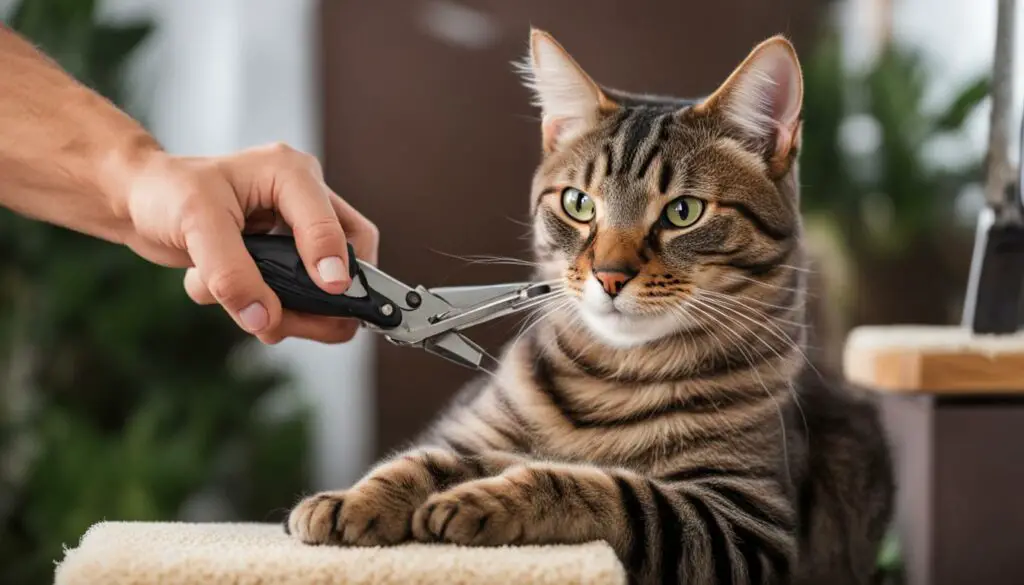
Table:
| Benefits of Cat Nail Care |
|---|
| 1. Prevents overgrowth and discomfort |
| 2. Reduces the risk of nail infections |
| 3. Protects furniture from scratching damage |
| 4. Promotes healthy scratching behavior |
| 5. Maintains overall paw health |
When to Seek Veterinary Help
As a responsible cat owner, it is important to be aware of the signs that indicate your cat may need veterinary help for their claws. Seeking prompt veterinary assistance can prevent further complications and ensure the overall well-being of your furry friend.
If you notice any of the following signs, it is recommended to reach out to your veterinarian:
- Visible nail infections
- Abnormal nail behavior, such as excessive biting or licking
- Nail deformities, including misshapen or crooked claws
- Signs of nail trauma, such as bleeding, swelling, or limping
These symptoms may indicate underlying health issues or injuries that require professional attention. A veterinarian will be able to provide a proper diagnosis, recommend appropriate treatments, and ensure the overall paw health of your feline companion.
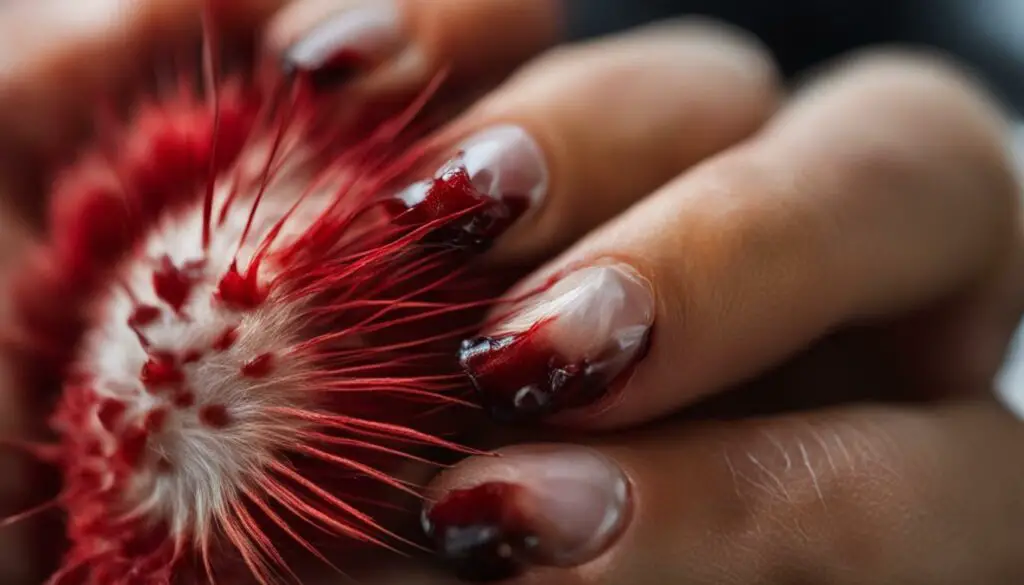
Remember, cats are skilled at hiding pain or discomfort, so it is essential to be observant and proactive in monitoring their claw health. By seeking veterinary help when necessary, you can help alleviate your cat’s pain and ensure they live a happy and healthy life.
The Importance of Scratching Posts
Scratching is a natural behavior for cats, and providing them with scratching posts is essential for their physical and mental well-being. Scratching posts offer a variety of benefits that help keep your cat happy and healthy.
One of the primary advantages of scratching posts is that they give cats a designated place to satisfy their scratching behavior. By providing a scratching post, you can redirect their scratching away from your furniture and other household items that may be damaged. This not only protects your belongings but also ensures a harmonious living environment for both you and your feline companion.
Having a variety of scratching posts, cat furniture, and toys can help redirect your cat’s scratching behavior to appropriate surfaces.
Scratching posts also provide exercise and help maintain your cat’s physical health. When cats scratch, they engage their muscles and stretch their bodies, promoting flexibility and preventing stiffness. Additionally, scratching posts can help cats shed the outer layers of their claws, allowing new, healthier claws to grow.
Lastly, scratching posts offer mental stimulation for cats. They provide a form of enrichment that allows cats to engage in natural behaviors, which can be especially important for indoor cats. Having different types of scratching surfaces, such as vertical posts, horizontal boards, and sisal rope, can further enhance their scratching experience and keep them mentally stimulated.

Choosing the Right Scratching Post
When selecting a scratching post for your cat, consider their preferences and needs. Some cats prefer vertical posts, while others may prefer horizontal surfaces. It’s also essential to choose a sturdy post that won’t wobble or tip over when your cat uses it. The post should be tall enough for your cat to fully stretch and have a textured surface that mimics tree bark or sisal rope for optimal scratching satisfaction.
Additionally, consider the placement of the scratching post. Position it in an area where your cat spends a lot of time, such as near their favorite sleeping spot or by a window. This will encourage them to use the scratching post regularly.
Conclusion
Scratching posts are an integral part of cat care, providing numerous benefits for your cat’s physical and mental well-being. By offering appropriate scratching surfaces, you can redirect their scratching behavior, promote physical exercise, maintain healthy claws, and enrich their lives. Remember to choose a suitable scratching post and place it in a strategic location to ensure maximum utilization by your feline companion.
The Dangers of Declawing Cats
Declawing cats has long been a controversial practice that raises ethical concerns and has a significant impact on the well-being of cats. It involves the surgical removal of the claws, which can cause pain, behavioral issues, and long-term physical and psychological effects on our feline companions.
Research has shown that declawing can lead to chronic pain, as it involves amputating the last bone of each toe. Cats may experience difficulty walking, balance problems, and discomfort when using the litter box. It can also affect their ability to defend themselves, climb, and engage in natural scratching behavior, which is essential for exercise and stress relief.
Fortunately, there are alternatives to declawing that prioritize the welfare of your cat. Regular nail trimming, providing appropriate scratching posts and toys, and behavior modification techniques can redirect your cat’s natural scratching behavior to acceptable surfaces, protecting your furniture while keeping your cat happy and healthy.
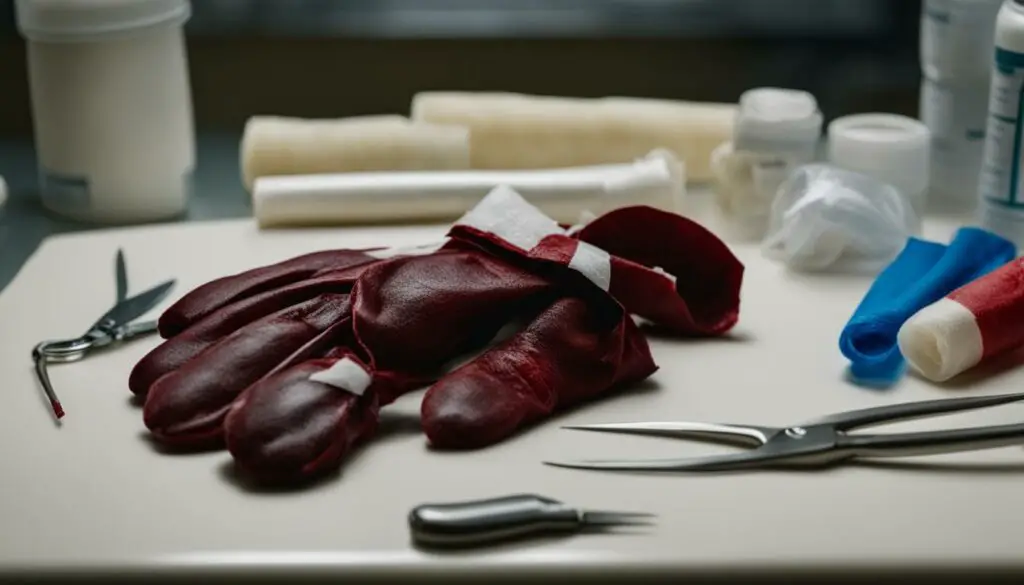
Table: Alternatives to Declawing Cats
| Alternative | Description |
|---|---|
| Regular Nail Trimming | Trimming your cat’s nails on a routine basis can help maintain a healthy nail length and reduce the risk of scratching-related issues. |
| Scratching Posts and Toys | Providing different types of scratching posts and toys can redirect your cat’s scratching behavior and encourage them to use appropriate surfaces. |
| Behavior Modification Techniques | Training and redirecting your cat’s behavior through positive reinforcement and environmental enrichment can help discourage unwanted scratching. |
By opting for these alternatives, you can ensure the well-being of your cat while promoting a harmonious living environment for both you and your feline friend. Remember, a little extra effort and understanding can go a long way in safeguarding the health and happiness of your beloved pet.
Proper Nail Care for Cats
Proper nail care is vital for ensuring the health and well-being of your feline friend. Regular trimming, monitoring the condition of their claws, and providing appropriate scratching options are essential aspects of maintaining optimal paw health.
Regular trimming helps prevent overgrowth, which can lead to discomfort and potential nail deformities. It is important to use proper nail clippers designed specifically for cats to ensure a safe and pain-free trimming experience. Remember to trim only the sharp tip of the nail and avoid cutting too close to the quick, which can cause bleeding and pain.
Monitoring the health of your cat’s claws is equally important. Keep an eye out for any signs of abnormalities, such as changes in color, texture, or shape. If you notice any redness, swelling, or discharge around the nails, it may indicate an infection or injury, in which case you should consult with your veterinarian.
In addition to regular trimming and monitoring, providing your cat with appropriate scratching options is crucial. Scratching is a natural behavior for cats, and it helps them maintain healthy claws by removing the outer sheath and promoting proper nail growth. Invest in scratching posts or boards that are sturdy, tall enough for your cat to stretch fully, and covered in materials that mimic the texture of tree bark. This will encourage your cat to use them and deter them from scratching furniture or other inappropriate surfaces.

Benefits of Proper Nail Care
Proper nail care not only promotes the health of your cat’s paws but also has several other benefits. Firstly, it helps prevent your cat from accidentally scratching and injuring themselves or others, including you and your family members. Trimming their nails reduces the risk of accidental scratches during play or grooming sessions.
Secondly, maintaining healthy claws through regular trimming and providing suitable scratching options can protect your furniture and other household items. By redirecting your cat’s scratching behavior to appropriate surfaces, you can minimize the destructive impact on your belongings.
Lastly, proper nail care can contribute to your cat’s overall well-being. Unhealthy claws can cause pain and discomfort, affecting their mobility and quality of life. By taking care of their nails, you are ensuring their comfort and preventing potential complications.
The Benefits of Cat Nail Maintenance
Proper cat nail maintenance offers a multitude of benefits that contribute to the overall well-being of your feline companion. By prioritizing regular nail trimming and monitoring, you can ensure optimal paw health, protect your furniture from scratches, and promote the safety of both your cat and household members.
One of the key benefits of cat nail maintenance is maintaining paw health. Regular nail trimming helps prevent overgrowth, which can lead to discomfort and difficulty in walking. By keeping your cat’s nails at an appropriate length, you reduce the risk of nail deformities and ingrown nails, ensuring that your furry friend can move around comfortably and without pain.
Another advantage of cat nail maintenance is protecting your furniture from scratches. Cats have a natural instinct to scratch, which helps them stretch their muscles and maintain healthy claws. However, without proper outlets for this behavior, they may resort to scratching your furniture. By providing scratching options such as scratching posts or pads, you can redirect their scratching behavior to appropriate surfaces, preserving the condition of your beloved furniture.
Lastly, cat nail maintenance contributes to human safety. Overgrown and sharp claws can accidentally scratch and injure family members, especially children and the elderly. By keeping your cat’s nails trimmed and rounded, you minimize the risk of accidental scratches, ensuring a safe and harmonious environment for everyone in your home.
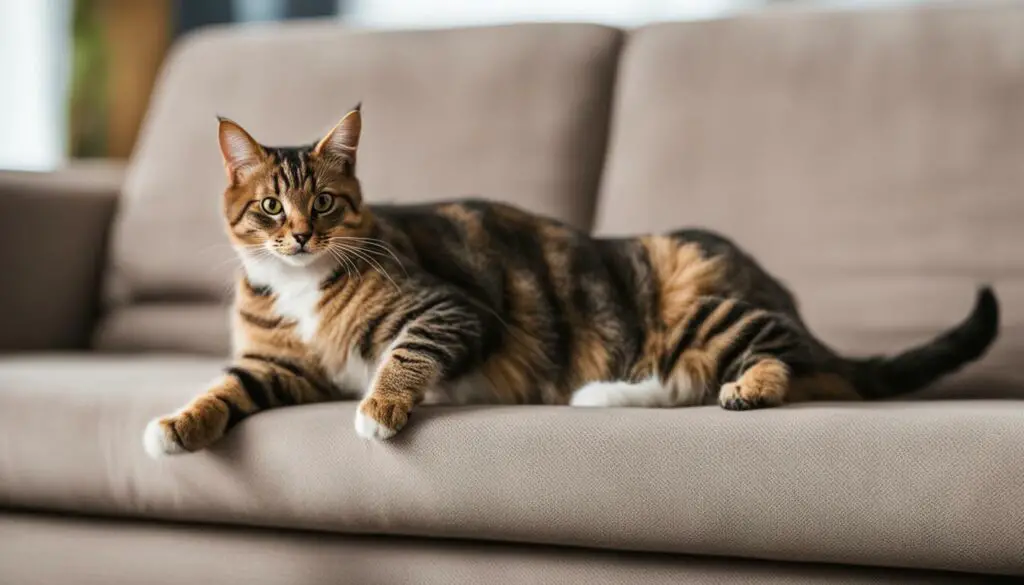
A Summary of the Benefits of Cat Nail Maintenance
- Maintains optimal paw health by preventing overgrowth and nail deformities.
- Protects furniture from scratches by providing appropriate scratching options.
- Ensures human safety by minimizing the risk of accidental scratches.
In conclusion, cat nail maintenance plays a crucial role in promoting the health and well-being of your feline companion. By regularly trimming and monitoring their nails, you can maintain their paw health, protect your furniture, and ensure the safety of both your cat and household members. Remember to approach nail trimming with care and patience, using proper techniques and tools to avoid causing any discomfort to your furry friend. By prioritizing cat nail maintenance, you can create a comfortable and harmonious environment for both you and your beloved cat.
Conclusion
Unhealthy cat claws can have a significant impact on feline health. By understanding the signs of unhealthy claws and their causes, we can take preventive measures and seek appropriate treatment. Nail care plays a crucial role in maintaining paw health, and regular trimming and monitoring are essential.
Prevention is key when it comes to unhealthy cat claws. By providing scratching posts and regularly trimming your cat’s nails, you can help prevent overgrowth and the development of infections or deformities. Monitoring your cat’s claw health allows for early detection and timely intervention.
If you notice any signs of unhealthy claws, seeking veterinary help is vital. A thorough examination by a veterinarian can determine the underlying cause and guide proper treatment, which may involve nail cutting and antibiotics for infections. It is important to monitor your cat’s recovery process for any additional issues that may arise.
Grooming and nail care should not be overlooked in maintaining a healthy and happy cat. By prioritizing nail maintenance, we can ensure optimal paw health, protect our furniture, and promote safety for both our furry friends and ourselves. Remember, a little grooming goes a long way in keeping our cats thriving.
FAQ
What are the signs of unhealthy cat claws?
The signs of unhealthy cat claws include thickening nails, trauma to the nail bed, scaly nails, ingrown nails, changes in behavior, and abnormalities.
What can cause unhealthy cat claws?
Unhealthy cat claws can be caused by underlying health problems, infections like ringworm, overgrown nails, and nail trauma.
How can I prevent unhealthy cat claws?
Regular nail trimming, providing scratching posts, and monitoring claw health can help prevent unhealthy cat claws.
How are unhealthy cat claws treated?
It is important to seek veterinary help for unhealthy cat claws. Treatment may include nail cutting, antibiotics for infections, and monitoring the recovery process.
Why is proper cat nail hygiene important?
Proper cat nail hygiene is important for maintaining overall paw health, preventing overgrowth, infections, and deformities.
How should I care for my cat’s nails?
Regular nail trimming, monitoring nail growth, and providing appropriate scratching options are key to caring for your cat’s nails.
When should I seek veterinary help for my cat’s claws?
It is important to seek veterinary help if you notice nail infections, abnormal nail behavior, nail deformities, or nail traumas in your cat.
Why are scratching posts important for cats?
Scratching posts provide an outlet for your cat’s natural scratching behavior, preventing them from damaging furniture or other household items.
What are the dangers of declawing cats?
Declawing cats is considered harmful and unethical. There are alternatives to declawing, such as regular nail trimming, providing scratching posts, and behavior modification techniques.
What is proper nail care for cats?
Proper nail care for cats involves regular trimming, monitoring claw health, and providing appropriate scratching options.
What are the benefits of cat nail maintenance?
Cat nail maintenance promotes overall paw health, protects furniture from scratches, and ensures human safety.

